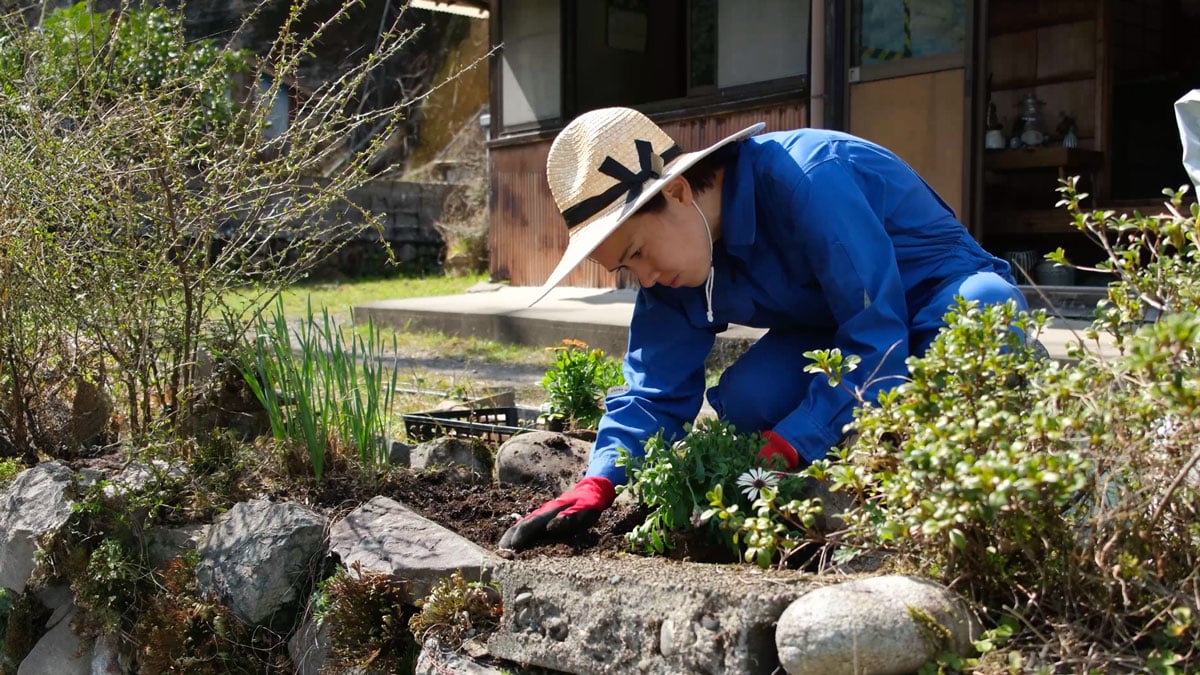We had a little surprise visitor this morning at the house. A swallow had come in through one of the doors I had left open to bring a little spring air into the house. Pancake and I just sat there, confused by this little bird’s arrival, as the little thing flittered around before finding its way back outside.
If you’ve ever heard or read about Japan’s 72 microseasons, the arrival of the swallows is one of them. April 5–9, when the swallows return to the rice fields. In fact, there are many others that I’ve already encountered since the beginning of the year — my favourite bush warblers singing in the mountains from February 9 to 13 (Microseason #2), or the tiny caterpillars turning into butterflies from March 16 to 20 (Microseason #9).

What this all means is that spring is finally here in this corner of Japan. And boy, have we been ready for this! While winter here in Japan is nowhere near as cold as it can get in our native Canada, we live in it differently here in Japan. Temperatures barely change when we walk into our very old, very not-insulated Japanese house, and we had just run out of dry wood for the bath’s kerosene heater before the weather started to turn.


We are in that precious seasonal overlap when the air is wonderfully warm during the day, without the usual sting of winter, and before it turns balmy and humid before summer. It’s our favourite time of year, and it’s also the season to start looking forward to gardening again.
I don’t quite remember what inspired it, but the arrival of the plum blossoms (microseason #8) got me thinking about starting a flower garden. I am not much of a gardener, nor have I spent much time thinking about flower gardens in general. But being in Japan, seeing everyone’s meticulously laid gardens do something to even those of us self-professed plant-killers. (My dad still likes to remind me of a plant he managed to bring back to life after I almost killed it. Seriously, even cactus die at my hands).
According to our neighbours, our landlady once kept one of the loveliest flower gardens before she left. Daffodils still sprout from along the stone wall, various rhododendron bushes grow along the driveway, and a tiny bush rose still managed to survive after years of weeds took over the property.
So, in a way, planting a flower garden is an homage to our landlady and the house that has given so much to us.


I started by planting with the rhododendrons. Growing up in the suburbs of Greater Vancouver, I still remember the giant rhododendron bushes in my old neighbourhood, their fuschia flowers spongy from the West Coast rainy season.


We also picked up a tray of lavender plants. Years ago, Jesse and I went on a trip to Hokkaido’s Furano City. We had arrived a couple of weeks too early before their famous lavender was in bloom, and I must have kept the disappointment in the back of my mind until now. Maybe this is my way of making up for the missed opportunity by creating our very own lavender garden.
Lavender was also my grandmother’s favourite flower. In a way, I am also planting it for the landlord, the grandmother of our house. We are planting all sorts of memories.
It didn’t take long for our neighbours to notice the changes. Even the ones I’ve never met stopped by to comment on the flowers. I still believe that gardening is one of the best ways to connect with your neighbours, and these past few weeks of planting have only strengthened my conviction. When in doubt, just garden.


Since gardening started in mid-March, I’ve planted Osteospermum (African daisies), a couple of burgundy-red garden cosmos, American mock vervain, beeblossom, and one chrysanthemum stem given to us by our neighbour.

Time will tell how these plants will grow. But with the rich countryside soil, gentle weather, and loads of rain, I’m hoping even these plants will survive this plant-kiler.
More updates soon. Until next time!



